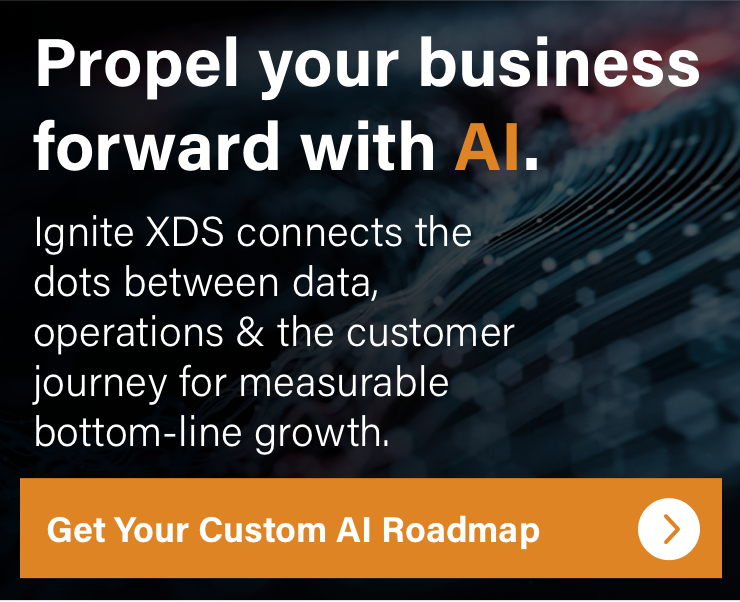
Why More Leads Won’t Save a Broken Funnel: 5 Better Fixes
When growth slows, the first instinct is almost always the same:
"We just need more leads."
It feels logical. Predictable. Safe.
But here’s the truth: more leads won’t fix a funnel that’s fundamentally broken.
We worked with a client who, on the surface, looked like they had their process together. They were confident in their sales team and investing heavily in lead gen. But once we got access to the backend of their site, the cracks appeared fast:
- Dozens of lead forms, some routing to no one
- Slow, inconsistent follow-up
- A confusing website that made conversion harder than it needed to be
We even blind-shopped them and experienced the friction firsthand. Response times lagged. Messaging felt disjointed. The customer experience broke down long before the sale.
Just by cleaning up those systems, simplifying forms, tightening follow-through, and clarifying the journey, we saw immediate improvement. More efficient leads. Less internal chaos. Higher conversion.
The problem wasn’t lead volume. It was structural.
At Ignite XDS, we’ve seen this again and again: companies spending six figures on demand gen, only to have it leak out the bottom. Why? Because the funnel isn’t built to convert what they’re driving in.
Here are 5 smarter fixes that actually move the needle:
1. Align Sales, Marketing, and Operations Around a Shared Strategy
Most funnel failures start with misalignment.
Marketing is optimizing for MQLs. Sales is chasing quarterly quotas. Ops is buried in delivery. And no one’s working from the same playbook.
Here’s the result:
- The brand promises one thing, but the customer gets something else.
- Sales is closing deals the ops team can’t fulfill efficiently.
- Marketing keeps generating leads no one follows up on or knows how to qualify.
Fixing this starts with a unified strategy model, one that aligns every function around the same goals, language, and outcomes.
Fix: Use a unifying strategy model like our PMP Methodology: Position → Message → Process.
Here’s what that actually means:
Position:
Where do you stand in the market? What do you do better than anyone else?
Most companies can’t answer this clearly, which means their teams can’t sell it confidently. We help leadership teams define their true position based on competitive advantage, internal capabilities, and customer need.
If your team isn’t aligned on what you stand for and who you’re best suited to serve, your funnel will attract the wrong leads and frustrate the right ones.
Message:
What do you say and how do you say it?
This is about more than marketing language. It’s about consistency across every touchpoint: your website, your sales conversations, your proposals, even your invoices. Your message should reinforce your position and build trust at every stage.
Messaging isn’t just copy. It’s conversion infrastructure. If your words don’t match your actions, your funnel will always leak.
Process:
How do you deliver, at scale and without chaos?
We build and optimize the systems behind the scenes: lead flow, handoffs, follow-ups, delivery ops, onboarding, and customer experience design. This is where marketing, sales, and ops either break… or build momentum.
Execution is where good strategy goes to die. If your process can’t support the promises your brand makes, growth won’t stick.
The PMP Methodology isn’t theoretical, it’s practical, repeatable, and designed for real mid-market businesses. It’s the lens we use to eliminate friction, create clarity, and build funnels that scale.
Because when everyone is aligned on what matters, conversion stops being a guessing game and starts becoming a system.
2. Map (and Fix) the Real Customer Journey
Here’s what we’ve found in nearly every growth engagement:
The company thinks they know their customer journey.
But they’ve never mapped it fully or pressure-tested it from the buyer’s perspective.
The result?
- Gaps in experience
- Conflicting messages across departments
- Missed trust-building moments that quietly stall deals or kill momentum
It’s not just a marketing problem, it’s a systems issue.
Fix: Build a clear, step-by-step view of the full journey, from first impression to final delivery.
This includes every stage and every interaction:
- How prospects find you
- What they see and feel on your site
- How fast and clearly someone responds
- How they’re handed off from sales to service
- What onboarding or delivery feels like
- How you keep, or lose, their loyalty after the sale
Here’s the value-add most companies miss:
Every stage of the journey is either earning trust or eroding it. And you can’t improve what you haven’t mapped.
We don’t just look at the journey from the inside out, we walk it like a customer would. We blind-shop. We test. We flag where friction builds, where buyers drop off, and where internal process disconnects from external promise.
The goal isn’t a diagram for a slide deck.
The goal is a system that turns attention into trust and trust into revenue.
3. Rebuild Messaging Around Your True Value, Not Just Features
Leads don’t convert when your message is unclear, undifferentiated, or misaligned with what your operations can deliver.
Too often, companies position around:
- Vague benefits ("great service")
- Generic features ("high-quality products")
- Language that doesn’t match how the customer thinks or talks
Fix: Craft a message that reflects your real-world value, built from both customer insight and operational strengths. Your message should do three things:
- Clarify the problem you solve
- Establish your authority
- Set an expectation your team can consistently deliver on
If your message is off, your funnel will always underperform.
4. Fix Your Follow Through, Not Just Your First Impression
Generating interest is easy. Converting it into revenue requires a system that can follow through.
- Are leads routed quickly and accurately?
- Are follow-ups personalized, timely, and valuable?
- Are buyers being educated or just pitched?
If your sales process relies on manual effort, guesswork, or bloated timelines, you’ll lose good leads after you’ve paid to acquire them.
Fix: Build a follow-through system with clearly defined handoffs, automated touchpoints where appropriate, and messaging that reflects where the buyer is, not where you wish they were.
Great follow-through is the difference between a funnel and a sieve.
5. Build for Scale, Before You Scale
More leads won’t just expose weak spots.
They’ll widen them.
If your onboarding can’t scale… if your delivery team is already stretched… if your data isn’t clean or your follow-up system is manual and inconsistent… then adding volume will amplify chaos, not revenue.
Fix: Before investing in lead gen, ask:
What would break if we doubled our pipeline this quarter?
Then fix that first.
This isn’t hypothetical, it happens fast.
We worked with a service-industry client transitioning from B2B white-label work to launching a direct-to-consumer division. Their leadership team wanted to push hard on lead generation to accelerate the rollout.
But once we assessed their systems, we uncovered critical gaps:
- No structured onboarding for consumer customers
- Inconsistent quoting and scheduling workflows
- No CRM integration for tracking multi-market growth
Rather than scaling too soon, we helped them build the operational backbone first, refining processes, defining clear sales handoffs, and preparing their marketing and tech stack for expansion.
The result? When the lead flow increased, they actually captured the revenue and sustained it across multiple new markets.
Operational readiness isn’t the sexy part of marketing.
But it’s the part that makes scale sustainable.
Final Word: More Isn’t the Answer. Better Is.
If your funnel is underperforming, the problem likely isn’t a lack of leads. It’s a lack of clarity, alignment, and operational readiness.
More leads just push more pressure into a broken system.
At Ignite XDS, we help companies build smarter funnels, from the inside out. Funnels rooted in strategy, aligned across departments, and optimized to turn interest into results.
Because when the system works, the leads convert. Stop guessing. Start scaling. Book a 15-minute Fit Call


